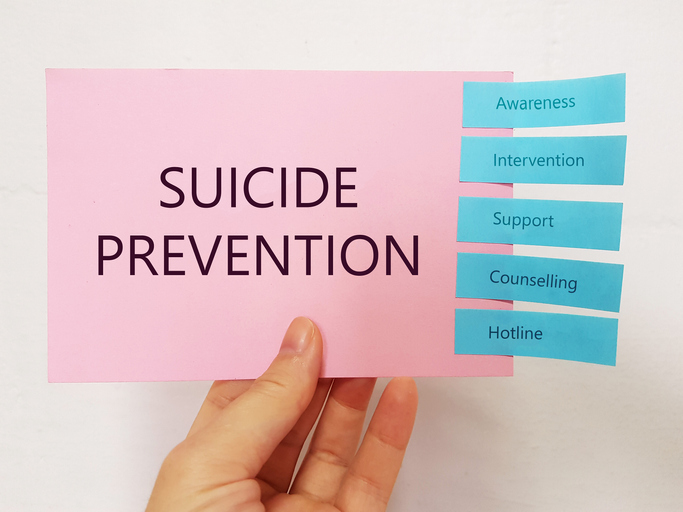As we know, compliance with the requirements of National Patient Safety Goal (NPSG) 15 on Suicide Prevention continues to be a challenge for many organizations. Survey findings related to inadequate suicide risk assessment abound.
But what about the requirement to monitor how well you’re implementing your suicide risk assessment process? Recently, we’ve seen an increase in survey findings for this requirement. Here’s a few examples:
“The organization had not included suicide risk reduction in its QAPI Plan. Leadership failed to monitor implementation of policies/procedures for management of suicidal patients.”
“The organization was not monitoring the implementation of its suicide risk assessment process. They had developed a written Suicide Risk Assessment Policy. However, they were not collecting any data to determine if staff were following the policy.”
So, let’s take a look at just what’s involved in this monitoring requirement.
NPSG 15: EP 7: Monitoring the Suicide Risk Assessment Process
Note: The following NPSG 15 requirements are the same in both the Hospital and Behavioral Healthcare manuals. The only difference is the Hospital manual uses the term “patient” and the BH manual uses the term “individual served.”
Specifically, Element of Performance (EP) 7 of NPSG 15 states:
“Monitor implementation and effectiveness of policies and procedures for screening, assessment, and management of patients at risk for suicide and take action as needed to improve compliance.”
In fact, EP 7 actually builds on EPs 5 and 6. EP 5 requires “written policies and procedures addressing the care of patients identified as at risk for suicide. EP 6 requires “written policies and procedures for counseling ad follow-up care at discharge for patients identified as at risk for suicide.”
Thus, NPSG 15 clearly requires written policies and procedures that define and describe your suicide risk screening and assessment process. EP 7 then introduces the monitoring requirement.
First of all, why is monitoring important? Monitoring is critical because it allows you to evaluate whether your process is being implemented as intended.
The goal is to achieve high reliability in the implementation of your suicide risk assessment process. In other words, you want to know the process is implemented as you designed it – and as you defined it in your policies and procedures. What you don’t want is significant variation in the implementation of the process.
Medical Record Review: A Key Monitoring Tool for NPSG 15
Whether you have an electronic medical record or still rely on paper records, medical record review is a key tool for monitoring the implementation of your suicide risk assessment process. Reviewing the medical record documentation of your suicide risk screening, assessment, and treatment planning process will provide valuable information about how your policy is actually being implemented.
The following are critical questions to examine when reviewing your documentation:
Was the suicide risk screening tool accurately completed? Remember, EP 2 requires a “validated screening tool.” Validated screening tools (such as the ASQ) have specific instructions for how to complete the tool.
Similarly, was the suicide risk assessment tool fully and accurately completed per instructions? Whether you’re using an evidence based tool or an evidence based process, staff need to complete the assessment according to the defined protocol.
Is there a documented risk level? For example, high, medium, or low risk. EP 4 requires that you “Document patients’ overall level of risk for suicide.”
Based on the risk level, is there a plan to mitigate the risk for suicide? This plan could include special precautions, a heightened level of observation, and other interventions as defined by your policy. Also, if the patient’s risk level is moderate or high, suicide risk should be included on the treatment plan with accompanying interventions documented.
Do the suicide risk precautions and interventions match the documented risk level? Not having a documented plan to mitigate the suicide risk is a common survey finding. For instance:
“In 4 out of 15 patients reviewed, clinicians rated patients as high suicide risk at admission based on the C-SSRS scale. There was no consistent process or protocol in the medical records identifying the specific interventions.”
Was a comprehensive discharge plan developed and reviewed with the patient/family? Remember, EP 6 requires “counseling and follow-up care at discharge for patients identified as at risk for suicide.” For more on this topic, see our post NPSG 15.01.01 suicide Risk Reduction: Safety Planning at Discharge.
Using Monitoring Results to Make Improvements
Once you’ve started collecting data on your suicide risk assessment process, you’ll need to include it in your ongoing Performance Improvement program. And analyze it to determine where improvements are needed.
For example, do staff clearly understand the policy? Do they need additional training in the tools? Are your medical record formats “user friendly” so they facilitate appropriate documentation?
Barrins & Associates Resources on NPSG 15
For more information and strategies for compliance with NPSG 15, see our earlier posts:
- NPSG 15 Suicide Risk Reduction: Feedback from the Field
- Suicide Risk Assessment: Q&A on July 1 Revisions to NPSG 15.01.01
- NPSG.15.01.01 Suicide Risk Reduction: Monitoring High Risk Patients
In addition, TJC’s R3 Report Issue 18 National Patient Safety Goal for Suicide Prevention is a highly valuable resource. It details the specific requirements and provides links to many helpful references and tools. We use it frequently during educational sessions with our clients.
Barrins & Associates Consultation
We’re quite pleased to be back onsite with our clients after the long hiatus. We’re very busy conducting Mock Surveys and Survey Readiness Consultations. As always, we’re prepared to support your ongoing compliance and survey readiness as we move forward in 2021.


